I’m contemplating bringing the following items. See below for further discussion. Also, click here for more info on equipment weight.
|
|
||||||||||||||||||||||||||||||||||||||||||||||||||||||||||||||||||||||||||||||
Bedding
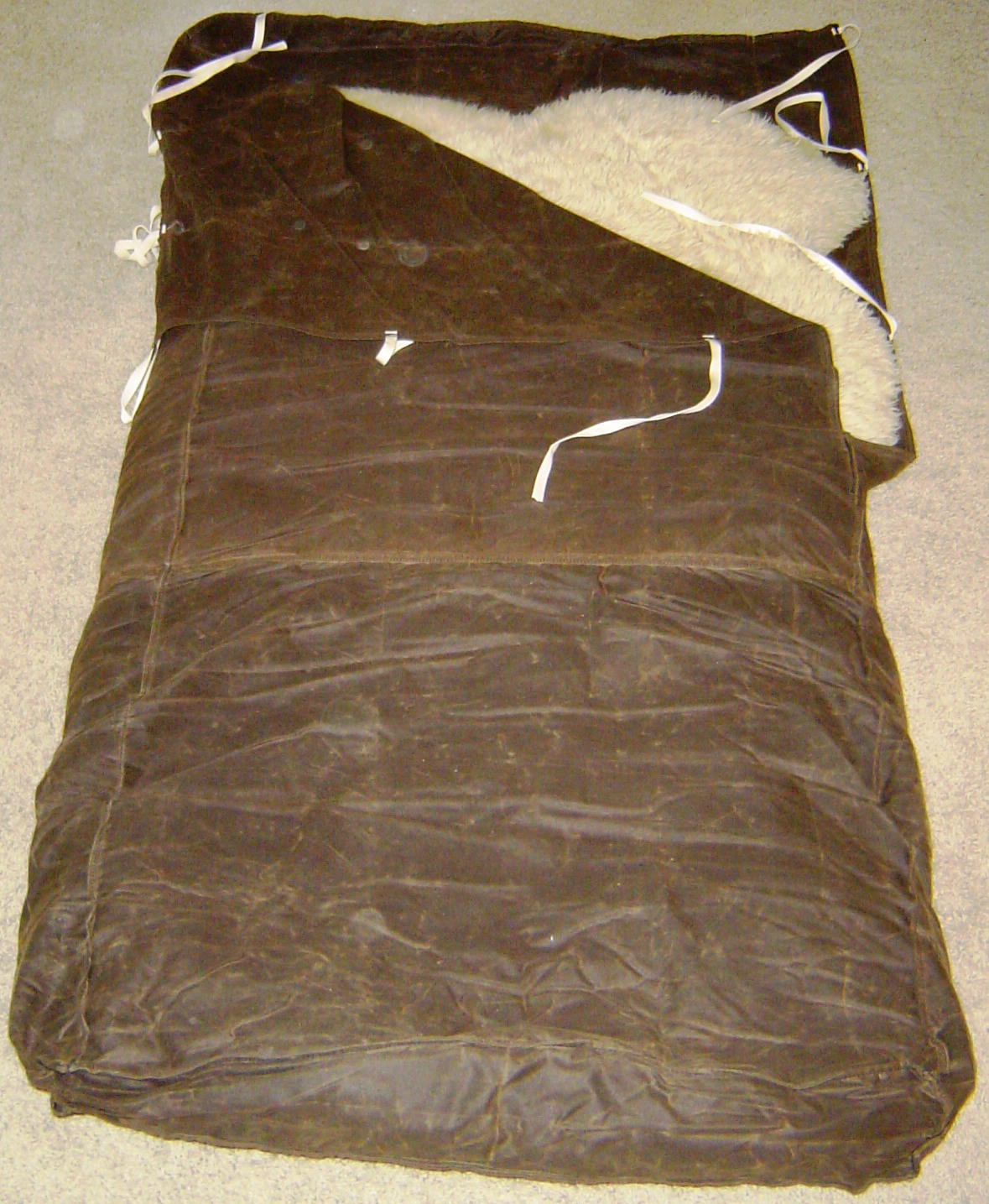 I’m using an oilskin canvas bed roll from Panther Primitives. It is essentially a 30″x80″ sack with half of one side left open. Inside, on the bottom, I have an extremely thick sheepskin as padding and insulation. I was planning on using 2 high quality 100% wool army blankets inside on top. However I had the good fortune of finding a second smaller and thinner sheepskin rug as well as an alpaca rug for dirt cheap. I might end up using one or both of these instead of the blankets as pound for pound they provide much greater loft and thus better insulation. They do take up more volume though, so I will need to experiment. I may keep the wool blankets waiting in the wings to be swapped out during a resupply.
I’m using an oilskin canvas bed roll from Panther Primitives. It is essentially a 30″x80″ sack with half of one side left open. Inside, on the bottom, I have an extremely thick sheepskin as padding and insulation. I was planning on using 2 high quality 100% wool army blankets inside on top. However I had the good fortune of finding a second smaller and thinner sheepskin rug as well as an alpaca rug for dirt cheap. I might end up using one or both of these instead of the blankets as pound for pound they provide much greater loft and thus better insulation. They do take up more volume though, so I will need to experiment. I may keep the wool blankets waiting in the wings to be swapped out during a resupply.
Cooking
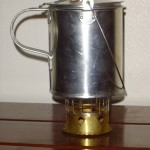 Sadly, I will rarely have the luxury of making a campfire on this trip. In keeping with the primitive spirit of the thing, I plan on using an alcohol stove. They are also incredibly small and lightweight which works in my favor. I purchased a Brasslite Turbo II-F. I imagine most of my cooking will consist of boiling water for oatmeal in the AM, and stew in the PM.
Sadly, I will rarely have the luxury of making a campfire on this trip. In keeping with the primitive spirit of the thing, I plan on using an alcohol stove. They are also incredibly small and lightweight which works in my favor. I purchased a Brasslite Turbo II-F. I imagine most of my cooking will consist of boiling water for oatmeal in the AM, and stew in the PM.
To that end I will bring a tin corn boiler, also from Panther Primitive. It will make a good all-purpose cooking vessel, as it has a tight-fitting hinged lid, a bail and a handle. I am hoping I can get a friend or relation to knit me a fitted wool cozy to slip over the boiler, thus increasing its efficiency.
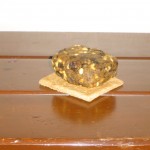 I’d like to bring a skillet of some kind as well so I can and some variety to my meals; for example to fry slices of pemmican in flour and butter or to grill fresh meat when I can get it. An iron skillet is too heavy to even consider, but I have seen a tin skillet with a folding handle that might do the trick.
I’d like to bring a skillet of some kind as well so I can and some variety to my meals; for example to fry slices of pemmican in flour and butter or to grill fresh meat when I can get it. An iron skillet is too heavy to even consider, but I have seen a tin skillet with a folding handle that might do the trick.
I have yet to select a water filtration method, but it will likely be a pump operated filter as opposed to chemical purification. This will require further research.
Storage
 Organization and optimization of available space will be crucial, so I need to develop the best method for storing supplies and keeping things in order. I found an online retailer that sells numerous sizes of tin canisters and boxes with screw-top lids and I will likely employ many of them to keep various supplies separate. I will have several liquids to manage, such as lantern oil, denatured alcohol, possibly clarified butter. Also various foodstuffs-oats, sugar, spices.
Organization and optimization of available space will be crucial, so I need to develop the best method for storing supplies and keeping things in order. I found an online retailer that sells numerous sizes of tin canisters and boxes with screw-top lids and I will likely employ many of them to keep various supplies separate. I will have several liquids to manage, such as lantern oil, denatured alcohol, possibly clarified butter. Also various foodstuffs-oats, sugar, spices.
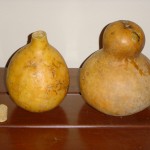 For water I could carry 2 large tin canteens. I also purchased three bottle gourds from a fellow in Indiana and have made them into water carriers by scraping out the interior and sealing it with beeswax. I generally followed these instructions. Here are my two water gourds–I plan on using hemp twine to macramé a sling for them to hang off the saddle. I also purchased an ostrich egg for fun, and hollowed it out and lined it with beeswax.
For water I could carry 2 large tin canteens. I also purchased three bottle gourds from a fellow in Indiana and have made them into water carriers by scraping out the interior and sealing it with beeswax. I generally followed these instructions. Here are my two water gourds–I plan on using hemp twine to macramé a sling for them to hang off the saddle. I also purchased an ostrich egg for fun, and hollowed it out and lined it with beeswax.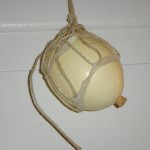 I’m not sure if I’ll take it but it looks pretty nifty. I have concerns that the gourds and egg will be too fragile, especially if the mule decides to roll around, thus the tin canteens may prevail. If I could get my hands on an animal bladder to sew into a water skin I think that might be the ideal method, but at this point I haven’t found a good source for one.
I’m not sure if I’ll take it but it looks pretty nifty. I have concerns that the gourds and egg will be too fragile, especially if the mule decides to roll around, thus the tin canteens may prevail. If I could get my hands on an animal bladder to sew into a water skin I think that might be the ideal method, but at this point I haven’t found a good source for one.
Equipment
I have a nice homemade antler handle knife given to me by an old Texan named Jerry I met camping up in Washington. We were sharing a bottle of McNaughton around the campfire and when he learned it was my birthday  he presented it to me on the spot. I think he’d be happy to know it was being put to good use.
he presented it to me on the spot. I think he’d be happy to know it was being put to good use.
My abilities with flint steel and char cloth are lacking at the moment. With the denatured alcohol I should be able to start fires easily enough, as long as I master the art of getting a spark to catch. I will bring a few lighter for emergency purposes and I hope I’m not tempted to use them.
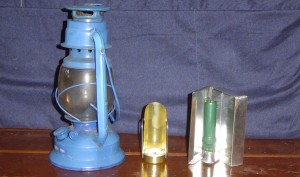 For lighting I have a tiny brass lantern from Panther Primitive which would hold a votive size candle. I will mainly rely on a kerosene hurricane which you can buy at gardening/hardware stores. Kerosene wasn’t introduced to the west until 1846 but I have no reliable source for whale oil… It seems prudent to bring a flashlight or headlamp in case of emergency, but I’d hate to give myself the option of taking the easy way out.
For lighting I have a tiny brass lantern from Panther Primitive which would hold a votive size candle. I will mainly rely on a kerosene hurricane which you can buy at gardening/hardware stores. Kerosene wasn’t introduced to the west until 1846 but I have no reliable source for whale oil… It seems prudent to bring a flashlight or headlamp in case of emergency, but I’d hate to give myself the option of taking the easy way out.
I will need a modest supply of repair supplies for my gear and garments-needles, sinew/thread, shears, leather scraps. Also larger tools like a hatchet, folding saw, or trowel for handling obstacles and burying waste. I have a hand-forged throwing tomahawk which I plan on carrying at my waist in place of a hatchet. Lengths of rope and leather cords will undoubtedly be useful.
For navigation I have a reproduction of an 18th Century brass sundial compass and the USGS topo maps included in the Wilderness Press PCT Guides. I’m not yet sure if I should take the whole guide or try and photocopy the necessary pages to save space and weight. I also have a brass spyglass, which seems like a must for any would be explorer.
I intend to keep a detailed journal throughout my journey, probably in pencil. Learning the use of a quill and ink might be overkill, but believe me I’ve considered it. Apparently the quills lose their edge rapidly-Lewis and Clark were continually crafting new ones on the trail from fowl they shot. I’ll have to add cursive alongside flint striking on my list of things to rapidly master…
Miscellaneous
Some form of grease or tallow was valuable to trappers and explorers of yore for many uses: soothing chapped skin, keeping bugs away, waterproofing, lubrication. If there is room I’ll bring a pint or two of pure grain alcohol. I can use it as a disinfectant, grease cutter, fire starter, sleep aid, or anesthetic if I need to amputate something.
I probably won’t take a GPS, but I’ll certainly take a satellite phone to help coordinate my resupplies. If I have my way it will never be used, the details of the resupply being hammered out at the prior rendezvous. I suppose I’ll need a solar charger for it too. I’m a musical person, so it seems apropos to take a harmonica or pennywhistle so I can make a little tune now and then.
Absent from this list is any kind of medical supplies. Western medical knowledge and practice was so misguided and useless during this time period that any supply list I might try and replicate would be wasted space. Common sense and prudence will be my first line of defense, after that the grain alcohol. Hopefully I won’t need the needles and sinew.
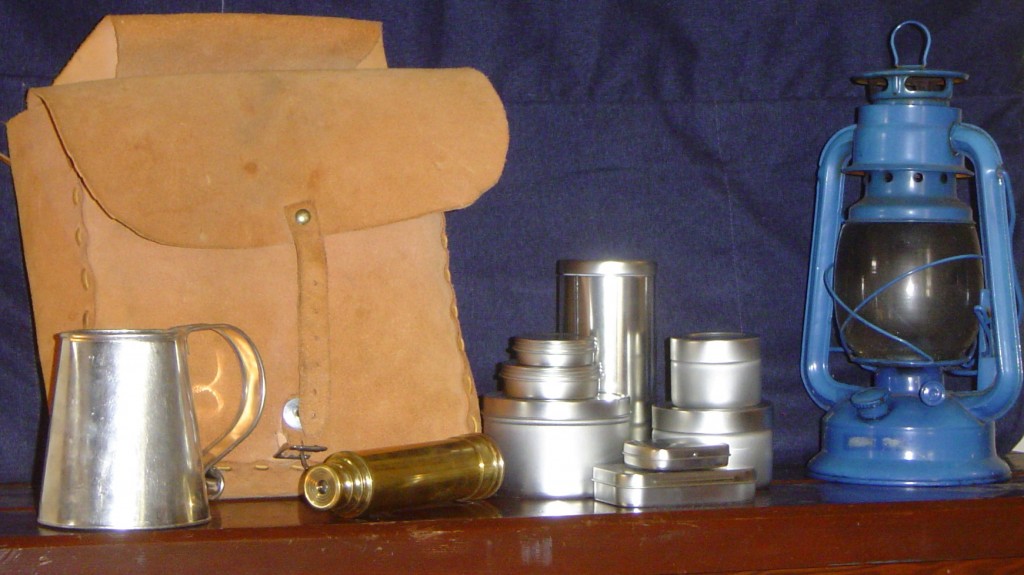
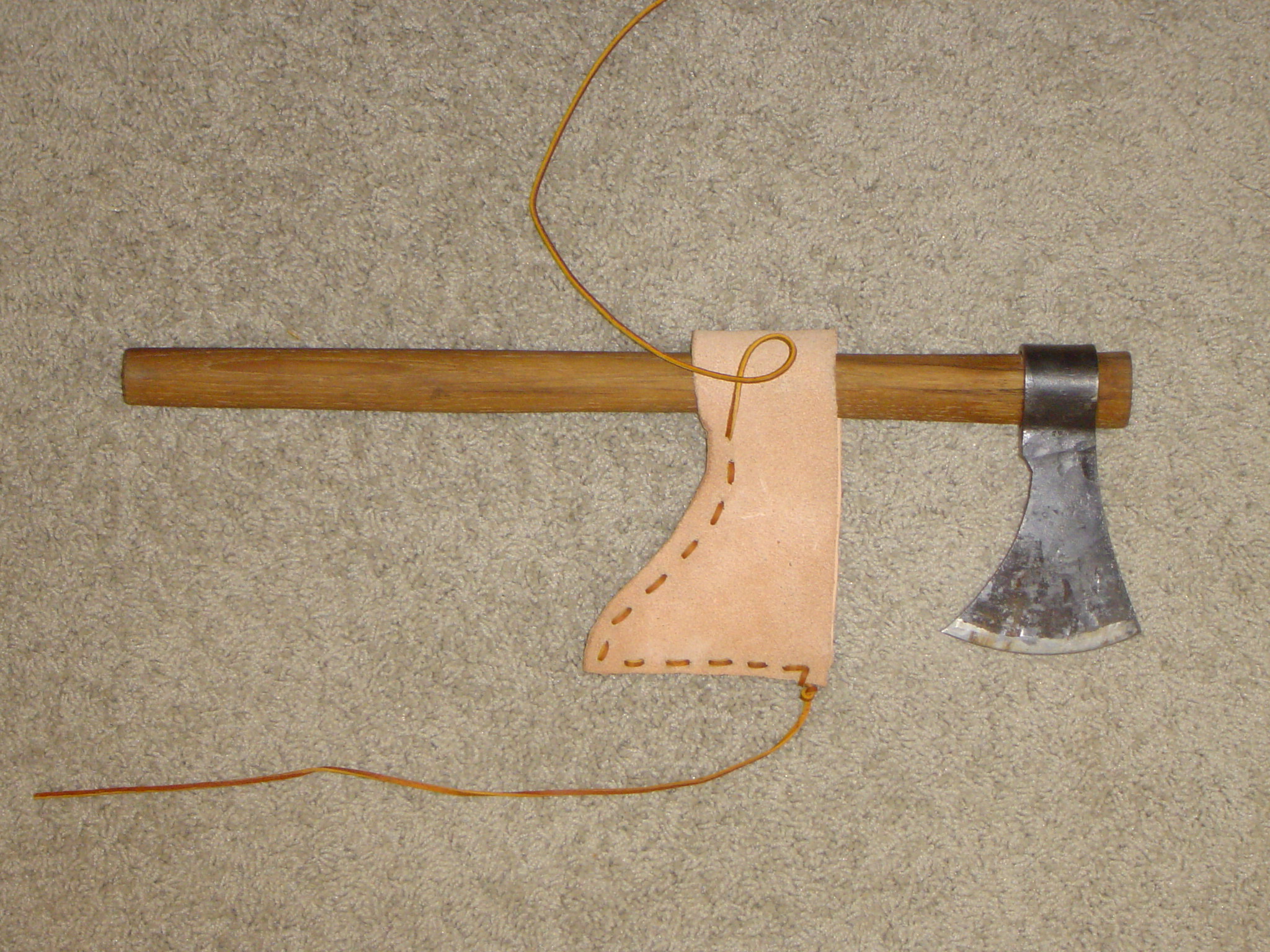
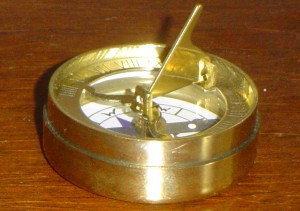

Wow! This sounds like an amazing adventure. I’ve entertained thoughts of hiking the PCT before, but never in such an impressive manner. I wish you all the best! By the way…I’ve been studying herbal medicine for a few years, and there are plenty of things you can make use of in emergency situations out on the trail. Most of the medicine used at that time would leave you in worse shape than you started, but herbs can be really effective for anything from stopping bleeding (the leaves of anything in the rose family like blackberry, thimbleberry, etc.) to treating infection (the root of Oregon grape). There are plenty of books out there that can give you an idea of the herbs found in the areas you’ll be hiking.
I hope you have a profoundly wonderful trip!
Jenney Lee (from CHS)
That’s a great idea about the herbs–I hadn’t though of it. I will definitely look into finding a resource for local herbology. I expect inflammation and intestinal problems will be my main concerns so hopefully there will be something useful out there for me. Thanks for taking a look!
The vast majority of thru hikers cut up the guide book or atlas and put the aplicable pages in the resupply for that section.
ok Bronze, lose the gourds and get a real canteen. they will break, promise. plenty of good period canteens on the market. i already told you what i think of fuel in the woods. Yarrow and Plantain are your friends. as is soaproot. beeswax candle can serve as chapstick. bring lard if you feel the need for tallow. i’ve never needed it. those sheepskins will be hard to dry out. i just use two wool blankets. you’ll harden up in a few days and be able to sleep anywhere on anything. use your saddle pad for insulation.
don’t skimp on meds for historical correctness
neosporin is a good choice and silk thread for stitches. it will work for you and the mule. you will cut yourself, promise.
three knives, one knife can get lost. and a folding knife stuffed somewhere. good for cleaning fingernails. make sure you have a mirror. char cloth not paper and bring extra 100% cotton cloth. use for char and bandages. bring at least two steel strikers and several good flints. lots of tinder, and use local tinder keeping yours for the bad times. keep the steels in different places same with the knives. i’m done for now. Bob
Dude, your a crazy man, have a great time on this trip!
I would advise against the Dietz style kerosene lantern for two reasons. Weight of fuel and possible spilling of fuel contaminating food stuffs,
Also that style of lantern did not come about until 1867.
I would go with beeswax or sterine candles. They are lighter and take up less space.
Good Luck
Yeah I think the lantern may be going away… Based on the feedback I’ve been receiving it seems like unnecessary weight, volume, and hazard. I have concern about candles blowing out though, and I may find that I need some light at times during the night. I’m also considering bringing a little video camera to record journals and fireside chats and such and they might not be able to cope with candle light. I did test out a Flip Mino camera with just a candle the other night and it barely hung in there.
Try a small tin candle lantern. They hold up quite well for what I do.
I notice nothing on your list for your mule!
I grew up horsepacking but that was in the 1940’s and 1950’s, about a century too late. I can tell you that when you take an animal along, you won’t be “hiking your own hike” but hiking your animal’s hike! That’s true whether the animal is a horse, mule or dog. You have to keep the mule healthy, well-fed and shod. Your stopping places will be dictated by where the mule can graze and have water. If he goes lame, you’re done until he recovers. Be really sure he’s vaccinated against West Nile. My-daughter-the-veterinarian says it has become widespread in California and has seen quite a few unvaccinated horses die.
You’ll probably want to do some research on equine gear. A surprising amount of horse tack is little changed since the 19th century. I know that in the 19th century, hobbles and halters were generally made of braided rawhide. At least in the later 19th century ropes were made from manila, Mexican maguey or hemp. When we started out (1945) there were no manila ropes (manila came from the Philippines, and World War II ended only 2 days before we started) so we used hemp. Cotton and nylon rope came along quite a bit later. You’ll have to find out when these materials started being used for rope. My oldest son is a Civil War re-enactor, although he’s been out of it the past two years while being stationed in Central Asia. However, that period is later than what you’re looking for. A better source might be to research early 19th century practices in California and Mexico.
One “modern” item (like the alcohol stove) you’ll have to take is weed-free horse feed. This is required by US Forest Service regulations. Plain old oats (what we used) is now illegal. Grazing is limited, and you can’t expect the mule to survive on only grass anyway. At least half of what your mule carries will be his feed and gear, not yours.
Another “modern” item you’ll need for the Sierra is bear-proof panniers. Google “Sierra Wild Bear” to find out what’s approved. I don’t know if you could get by with regular panniers, using a hikers’ bear canister for your food. It may be that you’ll have to bear-proof your mule’s food as well. If that’s the case, you’ll definitely have to use the metal panniers.
When we started horsepacking, my parents bought used gear. I don’t know when the regular wooden sawbuck pack saddle was invented, but I know from Charles M. Russell paintings that it was around in the later 19th century. My parents got a set of homemade cowhide box panniers–with the hair on the cowhide. They were already very well-used but continued to hold up until the late 1950’s when they finally were bucked off a horse one too many times. I don’t know when canvas panniers became common, and early ones may have been made from rawhide. Note that pack animals like to bash the panniers into trees and have been known to try to roll with the pack on, so if you have to carry any breakable items, box panniers would be better. If you have to use bear-proof panniers, they certainly will protect the contents from abuse by the mule, too.
Re the lantern: my parents had a folding candle lantern with isinglass (thin sheets of mica) windows. I know the use of isinglass goes back a few hundred years. I doubt such a thing still exists in these days of plastic, but you could check antique stores. I don’t think we ever took a flashlight until the 1950’s when someone gave my parents a battery lantern for Christmas.
I’m really excited about your trip and will be following it closely!
I have not done the trail, but I have spent a lot of time hunting along various parts of it in Oregon over the years, In the section between Crater Lake and Mount Batchelor there are a LOT of cats, and bears and I have seen Wolves twice west of the Steen’s (I don’t care what the biologists say, I’ve seen them in the wild in CO and WY at 10 yards I know what they look like).
There are also a few wild burro’s near enough to get interesting near the CA border. (They are more common towards Alvore, but if its really dry they can work over to the west)
Take a bottle of the purple magic from a vet supplier, and some sterile surgical catgut. My experience with horses and mules is they have a singular talent for nasty gashes from tree limbs, barbed wire, and some of the most amazing other stuff. The ability to put in a couple clean stitches is invaluable, and some horse vets will let you watch them work and teach you some emergency techniques. Also carry a list of farriers along the way, most are certified to give anesthetic to horses and they have the gear to help you.
You have been to trail farriers school right? Take a set of pre fitted shoes for the mule.
Have a good time it sounds like a great trip.
excellent page. I came across it because i was looking into a similar adventure, by far the best information so far for a long term expedition. thx to you and to all who replied.
I’m glad the site was of use to you; such was my intention in creating it. Feel free to contact me if you have any specific questions!
Vicissitude, by definition means one of the sudden or unexpected changes or shifts often encountered in one’s life. I applaud your effort to encounter as many as you can when you hit the trail in a few weeks. It is rare for anyone to take on something as grand in scale and ambition as you have. You are grabbing life by the gonads and leading it where you wish to roam. It sounds painfully contrite; nonetheless, I am proud of you. Do find a way to post a “picture of the day” as you move along the trail for I am sure that you’ll find at the end of a trip like this one they will act as defining milestones that the words expressed in your blog will have missed. Go man, go!